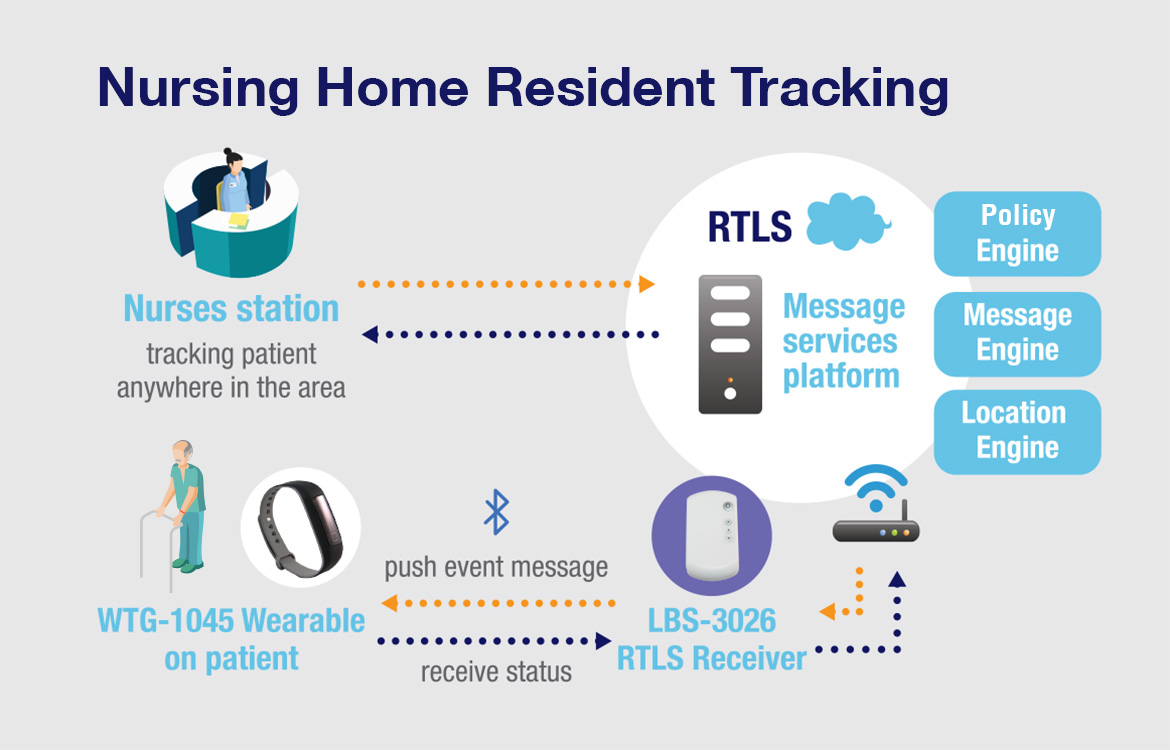
With the rise in the number of seniors in need of care and a decline in man-power at nursing homes, the senior care industry is facing a real problem. With this limited amount of human resources, it is very challenging to cover all the necessary tasks, and still provide exceptional personal care.
There are many critical tasks in senior care. For example, periodically monitoring the physiological status of the senior residents, constantly track the exact location of the resident to avoid accidents or prevent them from being exposed to unexpected risks. Simultaneously managing these tasks can be a huge burden for the nursing staff. By integrating automatic information systems, nursing homes will be able to efficiently use their limited resources, improve operation efficiency, thereby improving the overall safety and service provided.
The need to be able to constantly track the location of each resident and activity status is of utmost importance, so that staff can have a better grasp on the overall status of each resident that they are responsible for. If any abnormalities were to occur or the residents entered a restricted area, residence as well as nursing staff can be notified, to ensure safety and a more efficient reaction time.
In order to deal with these issues, nursing homes are introducing automated information systems and using Real-time Locating Systems (RTLS) with a centralized data center to allow the nursing staff complete automated tracking of the residents, allowing them to focus more on the quality of personal interactions with their residents and leave routine or trivial tasks to the system.
Linctronix helps nursing homes to implement their RTLS personal tracking system by using Bluetooth Low Energy (BLE) enabled wearable tags that connect to BLE receivers which in turn relay all the information via Wi-Fi to the centralized platform.
The BLE wearable tag will transmit the residents’ location and activity status. In the event that these measurements are not entered at the established periods the RTLS message service platform will remind the residents to do so and will also notify the nursing staff.
To allow a more personalized service, the BLE wearable tag can also be used to send service calls if there is need for any assistance. As a result the RTLS systems lets staff easily pin point the location of the service call so that they can provide prompt assistance, making for a safer environment and a more comprehensive healthcare service.

